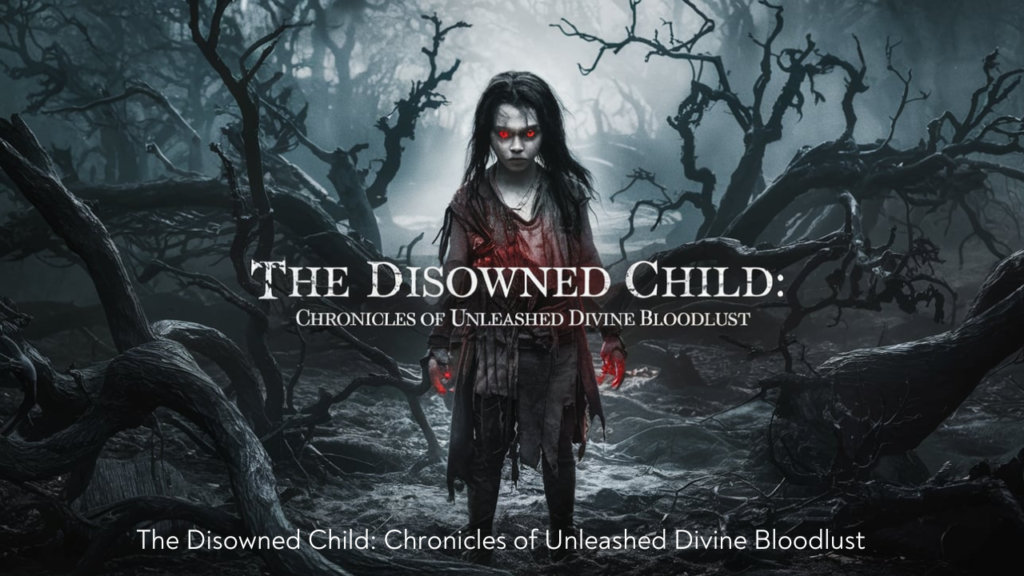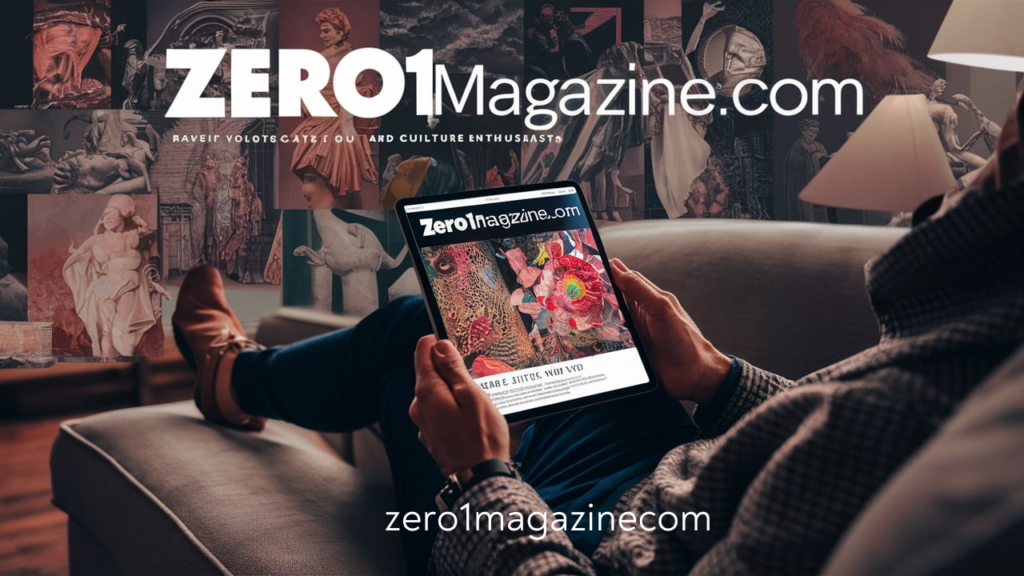Within the expansive realm of literature, few stories capture our creativeness and emotions like “The Disowned Child: Chronicles of Unleashed Divine Bloodlust.” This epic story delves into the topics of rejection, divine strength, and redemption via the adventure of its protagonist, Alaric. This article offers an in-depth exploration of the story’s narrative, person improvement, thematic elements, and its impact on readers and famous lifestyle.
The Disowned Infant: Embodying the Archetype
The Disowned Baby: An Archetype of Rejection
The disowned infant archetype is an effective and recurring motif in literature, representing topics of isolation, transformation, and self-discovery. In “The Disowned child: Chronicles of Unleashed Divine Bloodlust,” this archetype is vividly embodied by Alaric. Once a cherished member of his family, Alaric is cast aside because of his high-quality and feared powers. His adventure reflects the emotional and psychological results of rejection, and the way such stories can form one’s destiny.
This archetype is not particular to this story. Comparable topics appear in works along with “The Lion King,” where Simba is exiled and ought to reclaim his region, and “Harry Potter,” in which Harry is first of all rejected by means of the Dursleys earlier than coming across his real capability.
Unleashing the Divine Bloodlust: A Journey of Transformation
Alaric’s divine bloodlust is more than an insignificant physical trait; it serves as a profound metaphor for his internal struggle and latent electricity. As he struggles along with his newfound abilities and the accompanying bloodlust, Alaric embarks on a transformative quest. This journey for self-discovery and redemption is significant to the narrative, driving each the plot and his personal evolution.
The divine bloodlust symbolizes the powerful and frequently uncontrollable forces inside us that, whilst harnessed, can result in profound personal boom and transformation. This metaphor is evident in diverse literary and cinematic works, which include the character of Edward Cullen in “Twilight,” whose vampire nature displays his internal struggles.
Individual Development: Unraveling the Complexities
Alaric: The Disowned Infant
Alaric, the principal figure in “The Disowned Baby: Chronicles of Unleashed Divine Bloodlust,” is a character marked via his war with rejection and his quest for identification. To begin with, Alaric faces their abandonment because of his unusual powers. His adventure is fraught with external and internal challenges, as he battles foes and wrestles with his own inner demons.
Alaric evolves from a disheartened outcast right into an effective and compassionate hero. This development is a testimony to the character’s resilience and growth, reflecting broader issues of private transformation. In literature, characters like Frodo Baggins in “The Lord of the Rings” undergo similar trips from normal people to heroic figures, highlighting the transformative power of adversity.
Female Seraphina: The Enigmatic Villain
Female Seraphina, the antagonist of the tale, is a complicated and multifaceted person. Her motivations are shrouded in mystery, including depth to her position inside the narrative. Together with her own divine heritage and a personal vendetta towards Alaric, woman Seraphina represents issues of electricity, revenge, and ethical ambiguity.
Her individual serves as a foil to Alaric, challenging him and driving the central conflict. This archetype is reminiscent of characters like Loki from “Thor,” whose complex motivations and familial connections upload layers to his position as an antagonist.
Thematic Exploration: Unveiling Widely Universal Truths
Identification and Self-Discovery
At its core, “The Disowned Baby: Chronicles of Unleashed Divine Bloodlust” is a profound exploration of identification and self-discovery. Alaric’s adventure is not simply about getting to know his divine powers, but also about know-how his authentic self. This subject resonates deeply with readers, as it reflects the widespread war to find one’s location in an apparently detached world.
Similar subject matters are explored in works like “The Catcher inside the Rye,” in which Holden Caulfield’s journey is one in every self-discovery and locating his identification amidst societal expectancies.
Own Family and Betrayal
The topic of own family and betrayal is imperative to Alaric’s story. His rejection through his family and the subsequent betrayals he reports underscore the fragile nature of familial bonds. This exploration is depicted via Alaric’s relationships and his battle to reconcile his past along with his gift.
Own family dynamics and betrayal are pivotal subject matters in many literary works, consisting of “The Godfather,” in which circles of relatives’ loyalty and betrayal play important roles in shaping the narrative.
Future vs. Free Will
The tension between future and unfastened will is an ordinary subject matter inside the story. Alaric’s adventure increases questions about whether or not his path is predetermined by means of his divine background or fashioned through his own alternatives. This exploration provides intensity to the narrative and encourages readers to reflect on their personal lives and decisions.
This theme is likewise found in works like “Macbeth,” where the protagonist grapples with the effect of prophecy on his actions and fate.
Impact on Readers: A Journey of Transformation
Charming World-Building
The arena-constructing in “The Disowned Child: Chronicles of Unleashed Divine Bloodlust” is each immersive and innovative. The detailed setting and wealthy lore create a shiny backdrop for Alaric’s tale, drawing readers right into an international setting in which divine powers and mortal struggles intertwine.
Effective world-constructing is crucial in fable literature, as seen in “The Chronicles of Narnia,” wherein the richly evolved international complements the reader’s engagement and immersion.
Emotional Depth
The tale’s emotional depth is one in all its best strengths. Alaric’s journey from rejection to redemption is portrayed with nuance and sensitivity, permitting readers to hook up with his reviews on a personal level. The exploration of subject matters like betrayal, identity, and power provides layers of emotional complexity.
Emotional intensity is also an indicator of traditional literature, inclusive of in “To Kill a Mockingbird,” where the characters’ emotional trips enhance the story’s impact.
Critical Acclaim
The tale has garnered good sized critical popularity for its innovative storytelling and complicated characters. Critics have praised the unconventional for its compelling plot, thematic exploration, and the way it challenges traditional genre barriers. This acclaim displays the story’s effect on each reader and the literary community.
Awards and accolades obtained by means of similar works, along with “The Book Thief,” display the significance of recognizing literary excellence in contributing to a story’s recognition and impact.
Critical Perspectives and Reception
Accolades and Awards
“The Disowned Child: Chronicles of Unleashed Divine Bloodlust” has received numerous accolades and awards for its contribution to modern literature. These awards recognize the unconventional excellence in narrative innovation, character improvement, and thematic intensity.
Awards which include the Hugo Award and the Nebula Award highlight the recognition of literary achievements in genres just like the ones explored in the story.
Literary Analysis and Interpretations
Literary analysis often specializes in the tale’s use of mythological and archetypal elements. Scholars have explored how Alaric’s journey reflects broader issues of heroism and transformation, drawing connections between the narrative and classical literary traditions.
Comparative analysis with works like “The Hero with a Thousand Faces” by Joseph Campbell can provide similar insights into the story’s archetypal topics.
Cultural Impact and Adaptations
The cultural impact of the story extends beyond literature, with variations in movie and television bringing the narrative to a broader target market. Those adaptations have similarly cemented the story’s vicinity in popular subculture and accelerated its effect.
Superb diversifications, which includes the ones of “Game of Thrones,” illustrate the broader effect of literary works while translated into specific media codecs.
The Disowned Infant: Chronicles of Unleashed Divine Bloodlust Phenomenon
The Disowned Infant Phenomenon: Exploring the Unleashed Power Within
The phenomenon surrounding “The Disowned child: Chronicles of Unleashed Divine Bloodlust” displays its profound impact on both readers and the literary world. This exploration delves into how the tale’s issues and characters resonate with audiences, highlighting its importance in cutting-edge literature.
The Disowned child in Literature and Media: A Tale of Rejection, Redemption, and Resilience
The tale of the disowned child is a routine motif in literature and media, symbolizing topics of rejection, redemption, and resilience. “The Disowned child: Chronicles of Unleashed Divine Bloodlust” contributes to this culture by providing a fresh and compelling way to tackle those enduring issues.
The Rejection of Family Members: Family Bonds Fractured
The story’s portrayal of fractured family bonds underscores the emotional weight of rejection. Alaric’s reviews mirror the painful realities of being solid aside by way of the ones closest to him, imparting a poignant exploration of familial relationships and their impact on private identification.
The Burden of Divine Heritage: Betwixt Mortal and Immortal Realms
Alaric’s divine background places him among the mortal and immortal realms, adding complexity to his person and journey. This burden explores the demanding situations of balancing mortal reports with divine duties.
The Hunt for Redemption: From Outcast to Hero
Alaric’s quest for redemption highlights his transformation from an outcast to a hero. This journey displays broader subject matters of personal increase and the look for purpose, resonating with readers who relate to the battle for self esteem and recognition.
The Resilience of the Human Spirit: Triumph Amidst Adversity
The tale’s awareness at the resilience of the human spirit showcases Alaric’s capacity to conquer adversity and include his divine background. This topic of triumph amidst trouble is an effective message that resonates with readers searching for notions and wishes.
FAQ: The Disowned Child: Chronicles of Unleashed Divine Bloodlust
1. What is “The Disowned Child: Chronicles of Unleashed Divine Bloodlust” about?
“The Disowned Child: Chronicles of Unleashed Divine Bloodlust” is an epic story that explores themes of rejection, divine strength, and redemption through the journey of its protagonist, Alaric. The narrative delves into his struggles with being cast aside and his quest for self-discovery and empowerment.
2. Who is the main character in “The Disowned Child: Chronicles of Unleashed Divine Bloodlust”?
The main character in “The Disowned Child: Chronicles of Unleashed Divine Bloodlust” is Alaric. He is depicted as a disowned child who must navigate his divine powers and seek redemption after being abandoned by his family due to his feared abilities.
3. How does “The Disowned Child: Chronicles of Unleashed Divine Bloodlust” portray the theme of rejection?
In “The Disowned Child: Chronicles of Unleashed Divine Bloodlust,” rejection is portrayed through Alaric’s abandonment by his family. This theme is central to the story, as it highlights the emotional and psychological impacts of being cast aside and the subsequent journey towards self-acceptance and redemption.
4. What role does divine bloodlust play in the story of “The Disowned Child: Chronicles of Unleashed Divine Bloodlust”?
Divine bloodlust in “The Disowned Child: Chronicles of Unleashed Divine Bloodlust” serves as a metaphor for Alaric’s internal struggle and latent power. It symbolizes the uncontrollable forces within him that, when harnessed, lead to significant personal growth and transformation.
5. How does “The Disowned Child: Chronicles of Unleashed Divine Bloodlust” compare to other literary works?
“The Disowned Child: Chronicles of Unleashed Divine Bloodlust” shares similarities with other literary works that explore themes of rejection and redemption. For example, it resembles stories like “The Lion King” and “Harry Potter,” where protagonists overcome rejection and discover their true potential.
6. What is the significance of Alaric’s development in “The Disowned Child: Chronicles of Unleashed Divine Bloodlust”?
Alaric’s development in “The Disowned Child: Chronicles of Unleashed Divine Bloodlust” is crucial as it illustrates his transformation from a disheartened outcast to a powerful and compassionate hero. This evolution reflects broader themes of personal growth and resilience in the face of adversity.
7. How does the antagonist in “The Disowned Child: Chronicles of Unleashed Divine Bloodlust” contribute to the story?
The antagonist, Female Seraphina, in “The Disowned Child: Chronicles of Unleashed Divine Bloodlust,” adds depth to the narrative by challenging Alaric and driving the central conflict. Her complex motivations and divine heritage create a compelling foil to Alaric’s journey.
8. What impact has “The Disowned Child: Chronicles of Unleashed Divine Bloodlust” had on readers and critics?
“The Disowned Child: Chronicles of Unleashed Divine Bloodlust” has been praised for its immersive world-building, emotional depth, and critical acclaim. The story’s themes and characters have resonated deeply with readers and received positive reviews from critics, marking its significance in modern literature
Conclusion
“The Disowned child: Chronicles of Unleashed Divine Bloodlust” is a rich and compelling narrative that explores topics of rejection, divine energy, and redemption. Through its well-evolved characters, immersive world-constructing, and emotional intensity, the story offers a profound and attractive literary revel in. Its impact on readers and its important acclaim underscore its significance in modern-day literature, making it a noteworthy contribution to the style.
For the ones interested in exploring the themes and characters further, the book provides a captivating adventure into the complexities of identification and transformation. Whether through literary analysis or non-public reflection, “The Disowned child” invites readers to delve into its wealthy narrative and discover its enduring effect.




